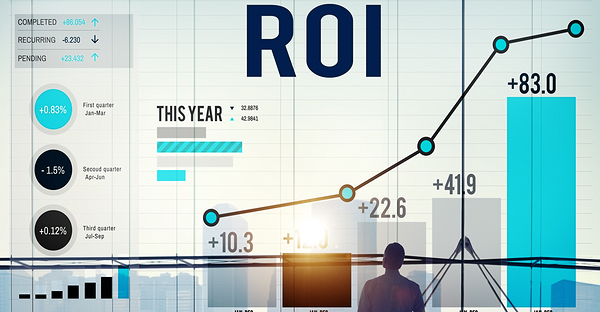The Proof is in the ROI
By Lawson Abinanti, Messages that Matter
In helping clients develop their marketing position, I tell them that sooner or later, they have to dig down to uncover the truth about their products. Not what they think (and hope) is the products, true nature and value, or what it was designed to be, but the real, bedrock truth. Digging takes effort, and you may not find what you thought was down there. But it’s necessary, because you had better be able to prove any claim you make.
Positioning depends on being able to make a promise that’s unique, relevant and credible. Most of the claims we see fail at least one of these tests. Generally, they lack uniqueness and/or credibility. So how can you make your marketing effort stand out on these scores as well as relevance? Offer proof.
Why ROI?
Some of the most common claims in B2B software marketing are that a product saves time, money and improves decision-making. But few companies provide compelling proof or quantify these benefits, because they don’t know how. My suggestion, hire a good ROI (Return on Investment) sales and marketing consultant.
A well-thought out, comprehensive ROI marketing and sales program is becoming a must in today’s difficult B2B software market. However, few companies seem to be investing appropriately. According to an Ernst & Young study, only two percent of the buyers say vendors are exceeding their expectations for ROI justification during the sales cycle. There’s clearly an opportunity for savvy marketers to jump ahead of their competition by improving their ROI marketing and selling.
If you need more compelling evidence, here it is. Eight-two percent of IT decisions require ROI analysis according to Information Week. Eighty-one percent of buyers expect vendors to quantify the value proposition, and by doing so, 60 percent more projects are likely to be approved.
Perhaps the most important fact of all: a valid ROI sales effort reduces the sales cycle by 30 to 40 percent, according the Gartner Group.
Components of a ROI program include some or all of the following: a careful analysis, a basic ROI analysis tool for the Web, a much more comprehensive ROI tool that will get you in front of the CFO, a white paper, customer profiles and sales training. Output includes a sales presentation, a Web seminar and the appropriate level of promotional activity (direct mail, e-mail or advertising campaigns.)
Don?t go there alone.
It’s not that companies don’t know that creating an ROI sales and marketing program is an imperative. The problem is that they attempt to create their ROI program internally. I know from my own experience that this is unlikely to succeed. About two years ago, I was helping a client create a message strategy for a new application. We developed a positioning statement and three support points that unfolded the story in more detail. One of the support points went something like this, “You can quickly implement this product to save time and money throughout the year.”
The ROI story seemed obvious: rapid implementation resulted in an immediate payback of time and money savings. But I felt we needed to prove it, and suggested that the product manager gather the evidence to support the product’s ROI story. It sounded easy.
Intuitively, we knew the ROI claims to be true. Proving it became problematic, because, in retrospect, we didn’t know how to do it. We were able to do some of the basics, such as identify business processes that the product automated or streamlined, thus saving time. We also identified processes that were accelerated, saving more time. It seemed self-evident that all the time this product saved gave the users more time for value added activities. Therefore, the logic ran, with more time for analysis, the company would benefit from better-informed decisions, and we described the types of decisions. The first problem we encountered was getting good information from customers. They didn’t know how much time their business processes took before they implemented my client’s product. We eventually gathered some valid data, but we didn’t have a good idea about how to quantify it. There were also soft cost savings that were difficult to quantify; employees were paid the same before and after the product was implemented. Yes, they accomplished more or performed higher value work, but how do you measure this? ROI experts know how, and it’s not obvious.
A year after the product manager started to gather ROI data, little progress had been made. Part of the delay was that the product manager had other more pressing priorities; a common problem at most B2B software companies. But even with more time, we probably wouldn’t have made much progress. We weren’t gathering the right data, and even if we had, we probably wouldn’t have used it properly. This was a job for an ROI specialist.
What an ROI expert does.
At about this time, I met an ROI expert who explained his process and showed me some examples. I told him I had a client who needed his help, and soon after, my client hired his firm to create an ROI program.
The project gave me an opportunity to see how to develop an ROI sales tool and marketing materials that are grounded in reality. An Economic Value Framework was created for the product. It identified the core processes, activities within these processes, and outcomes or benefits where costs were measured. Outcomes included:
.. Labor savings
.. Communication expense reduction
.. Improved financial decision making
The project was a five-step process that resulted in several deliverables including an Excel-based ROI calculator that can stand up to even the most skeptical CFO?s scenario testing. A simpler ROI calculator was developed for the client?s Web site, and a white paper provides an explanation of how the ROI was derived.
In my opinion, creating the ROI model with all the assumptions and calculations is the hardest part of an ROI project, and one that few have the knowledge or required expertise in financial modeling to do effectively. The first step in developing the model is to formulate a hypothesis for how your product increases revenues and reduces costs. In this step, you map product benefits to customer economics and identify any unknowns requiring more research.
The next step is to gather data from your customers, sketch out calculations and test the economic impact of each benefit. Then the tough step of knitting all this into the ROI model and selecting the right platform on which to mount it: Web, Excel, database, etc. The base or foundation of the model has the detail calculations that eventually roll up to top-level ROI savings summaries. Users can drill from the top down, click on numbers to see how they were calculated. Explanations support every number and assumption so there’s no ambiguity. Very convincing. Now, credibility, that absolute essential of positioning, has a foundation. And uniqueness is virtually insured just by having a substantive ROI presentation while your competitors do not.
The ROI tool is designed so a sales person can arrange a meeting with a CFO, and during the meeting, plug in the CFO’s variables and assumptions to determine the product’s economic benefit. At the end of the meeting, the CFO gets a customized cost savings and revenue improvement analysis. In addition, the tool calculates the four key financial metrics that most CFOs consider when making an investment decision: return on investment, net present value (NPV), internal rate of return and payback period. If this doesn’t sound complex enough to convince you to bring in an ROI expert, then perhaps the following will. According to CFO Magazine, 86% of CFOs use financial metrics to prioritize technology investments.
ROI makes your positioning bulletproof.
A compelling marketing statement is a benefit that addresses a customer problem. It needs to be important and believable for your target audience to listen and respond. And it’s got to be bulletproof. But unless you can prove your statement at some point in the sales cycle, you won’t get the sale. Strong ROI sales tools insure a higher close rate, and a faster one. It’s an investment worth making. Whatever you pay your consultant, I’m sure your ROI will be very satisfying.
About the author: Lawson Abinanti is co-founder of Messages that Matter, a consulting firm that helps B2B software companies create compelling message strategies that build awareness and demand. Messages that Matter gives clients the knowledge and tools to develop powerful message strategies that differentiate products and services from those of the competition. Lawson has held strategic marketing positions with several B2B software companies including Navision, Applix, TM1 Software and Timeline. He can be reached at [email protected].








